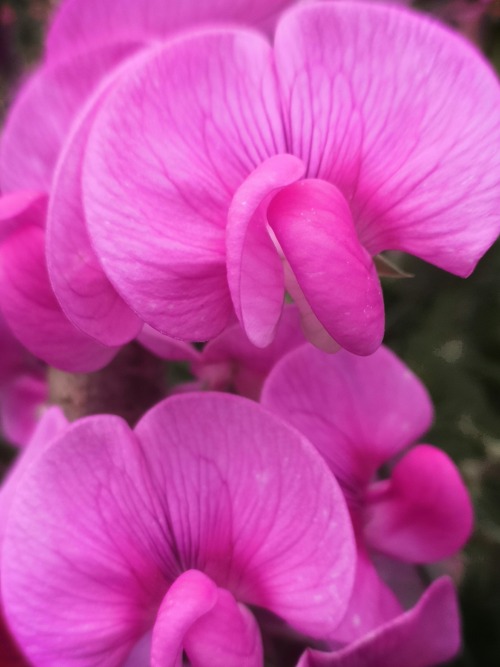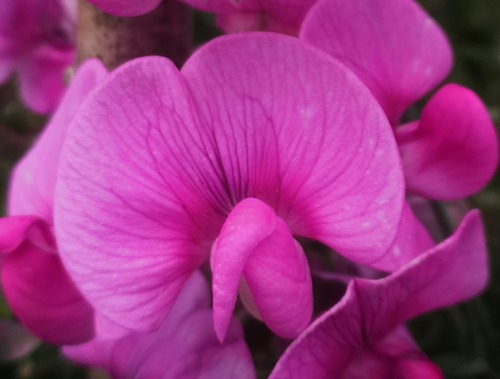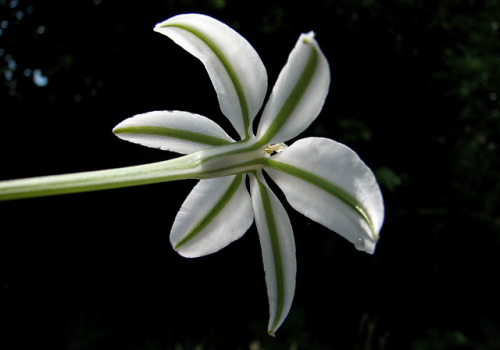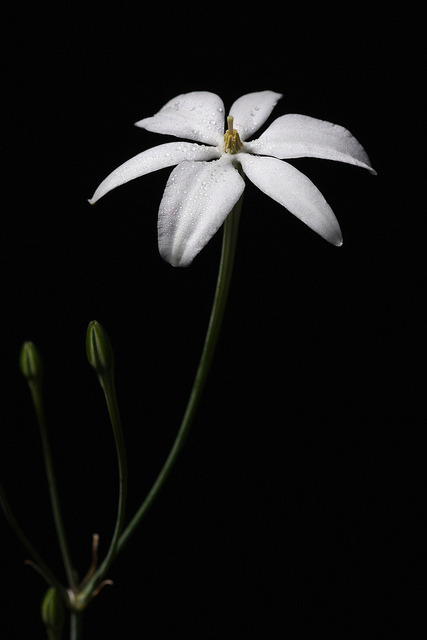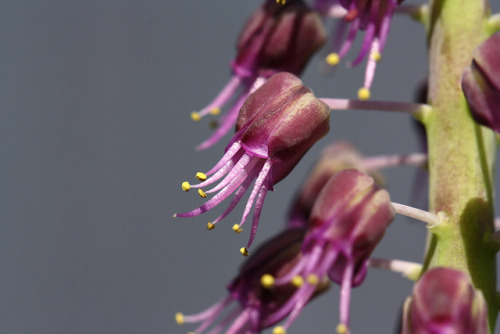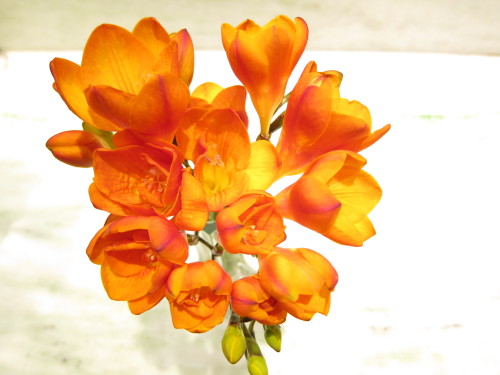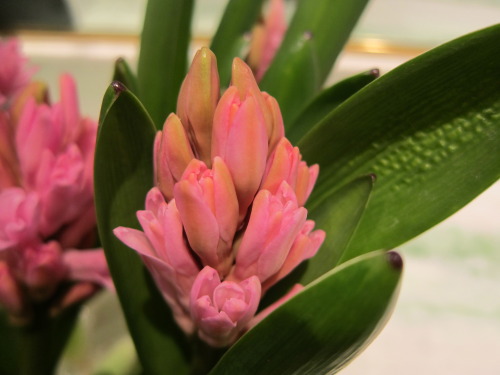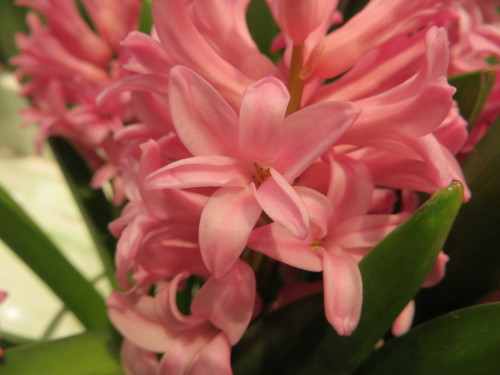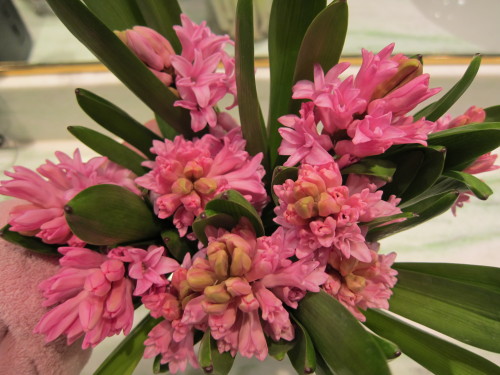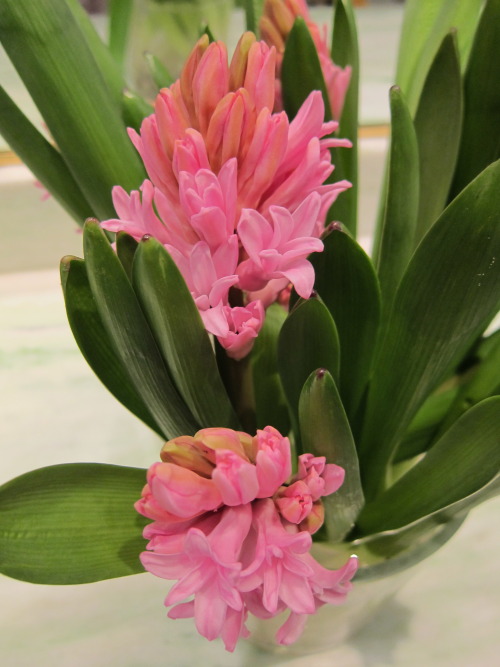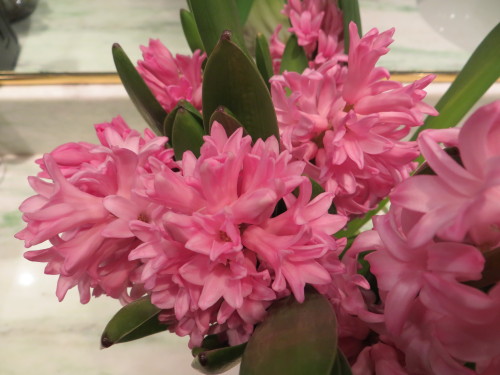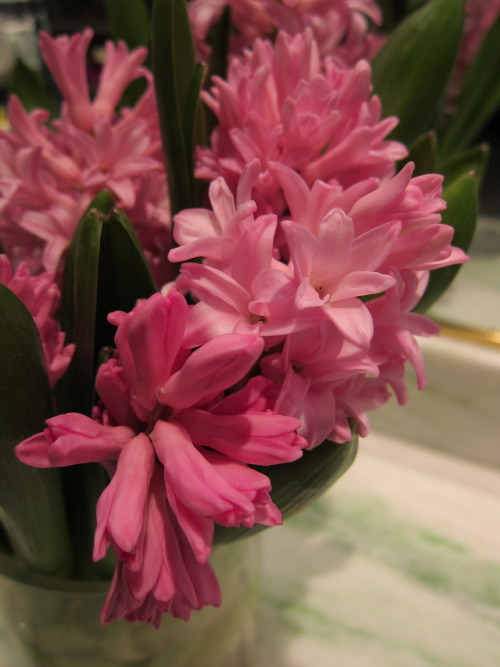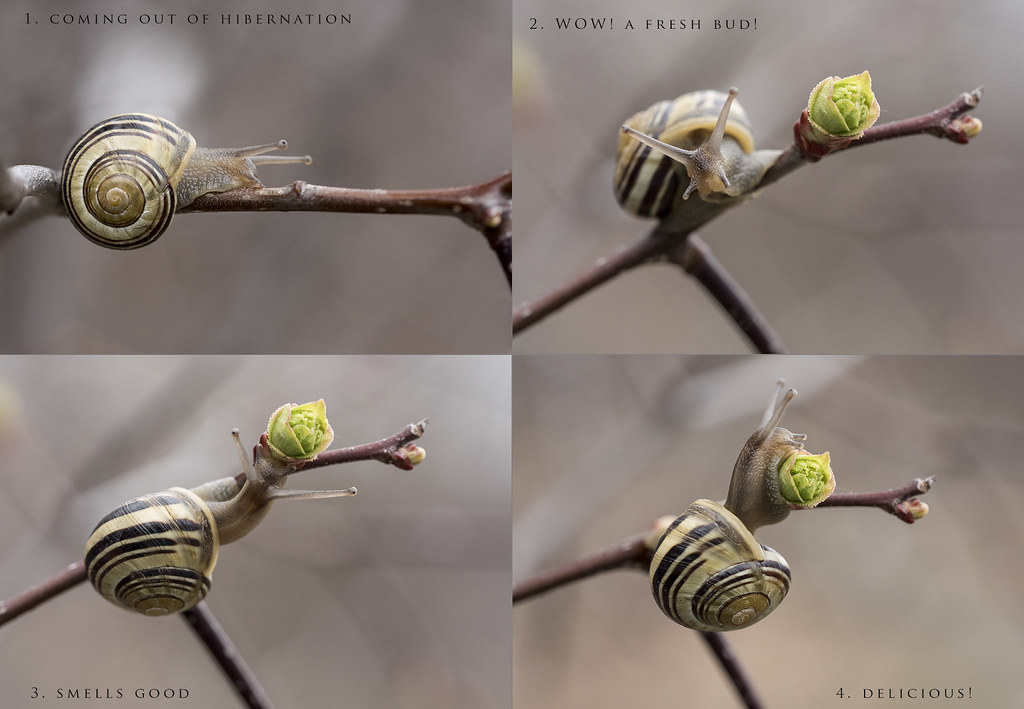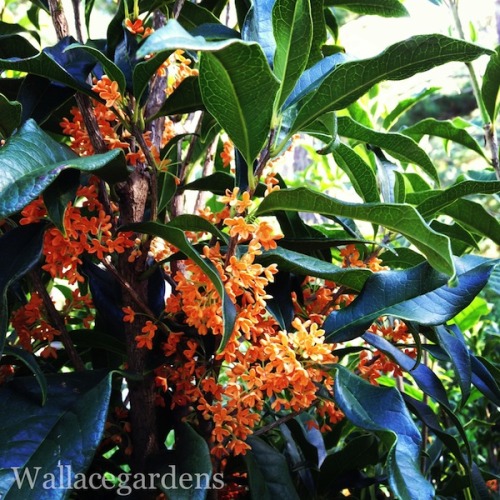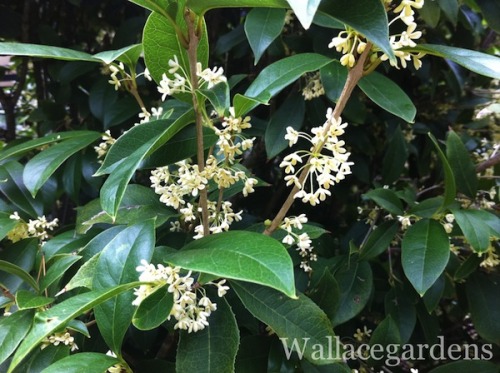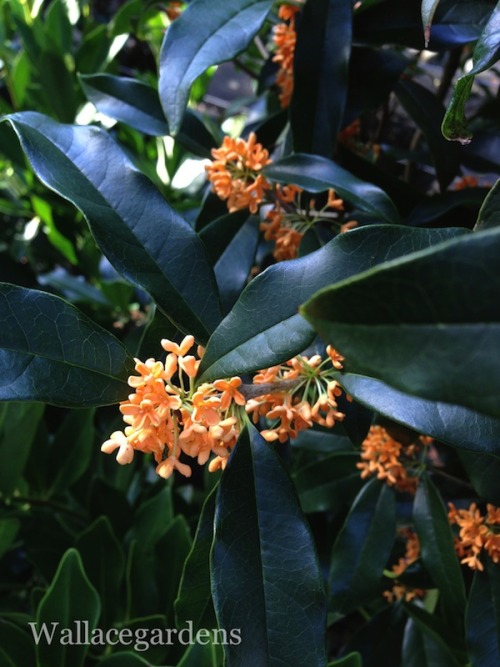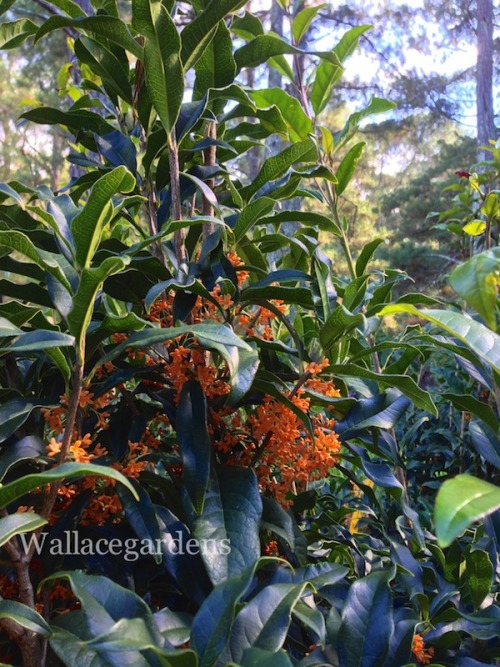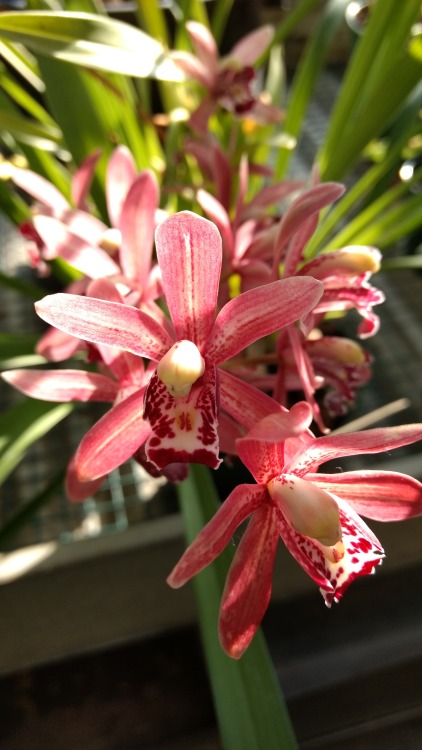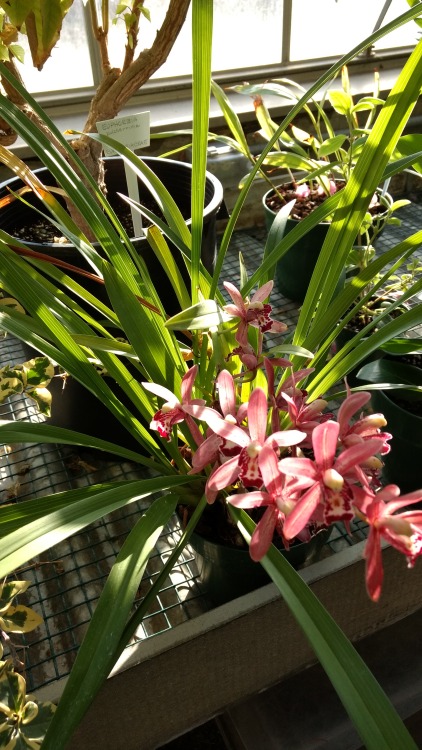#fragrant
Mum’s home-cooked Spicy Chicken with Caramelized Onions and stir-fry hairy gourd (Benincasa hispidavar.chieh-qua) or 毛瓜 in Mandarin. The matchsticks sized hairy gourd is cooked with minced pork and prawns to give it sweetness.



After dinner snack of Durians though I can’t remembered what varieties they belonged to. The king of fruits is creamy and sweet, just the way my mum like it.


Sometime when you need a sweet snack to satisfy the craving, these Mini Durian Puffs (S$9 for 14pcs/S$14 for 20pcs) from Sunlife Durian Puffs & Pastries will do the trick. My family love the unadulterated durian puree that is injected into these airy choux pastries.



Milla biflora
This marvellous fragrant geophyte’s native range spans Honduras, Guatemala, Mexico and south-east Arizona, south-west New Mexico in the United States. It emerges from dormancy with the onset of summer rains producing large fragrant fleshy white sequential blooms with striking green stripes on the abaxial surface of the flowers.
Milla biflora requires a rainy subtropical summer and a mild dry winter. A friend of mine grows these beautifully outdoors in Los Angeles during the summer with minimal care (kept dry and given protection from winter rain). Our current climate’s summers are too cool for this species to grow optimally but it will tolerate the cool temperatures so long as watering is carefully metered out. In dry Kaimukī (Honolulu) I grew this species successfully with daily summer watering however when I moved to Upper Mānoa I found out that it was too wet and humid for this species and other Milla species as many rotted in these conditions. In my experience most of the Mexican Brodiaeoidae are prone to rot when high temperatures, high rainfall are coupled with high humidity.
It belongs to a group of ornamental cormous species that include the popular genera BrodiaeaandTriteleia formerly classified as members of the Themidaceae, however now they belong to subfamily Brodiaeoidae of the huge Asparagaceae family.
© Uluwehi Knecht (photo and text)
Post link
Osa pulchra blooming at the Huntington Botanical Garden, San Marino, California.
Osa pulchra is the holy grail of showy tropical flowering plants and most of us have never heard of it. This spectacular member of the Rubiaceae is exceptionally rare, both in the wild and in cultivation. It is quite unusual that a flowering plant of such exuberant beauty can go virtually unknown for so long in cultivation. Its close relatives of better fame Portlandia grandifloraandCubanola dominguensis, are familiar to some horticulturists in tropical climates.
While in bloom this magnificent shrub may superficially resemble a coffee tree with white Brugmansia flowers hung from its branches, but surpasses both in elegance. The pendent trumpet-shaped fragrant white flowers are thick in texture and 22 cm in length.
I have been working with a good friend, Dylan Hannon, Curator of the Rose Hills Foundation Conservatory for Botanical Science and Tropical Collections at the Huntington Botanical Gardens (San Marino, California) for the past 4 years to help insure this species’ survival ex situ within Hawai'i and in a few other suitable tropical countries.
Until 2007, this endangered species was only known from two disjunct populations in the south of Costa Rica, one on the Atlantic side and the other on the Pacific side in wet lowland rainforest. Less than 30 individuals exist between these two populations in which natural reproduction is very poor. In addition, because of the location and nature of both colonies, botanists have been hesitant to accept that these plants weren’t planted by humans at some point due to their proximity to human dwellings¹. Five years ago Osa pulchra was found for the first time in Bocas del Toro, Panama. University of Panama biologists Reyes Carranza and Fermín Hernández found this species during an environmental impact survey² . This exciting discovery may be the first record of a wild population.
Nearly all plants in cultivation outside Mesoamerica trace back to seven seedlings resulting from a pod collected in 1996 on a Missouri Botanical Garden expedition to the Osa Peninsula. About 100 F1 seedlings were raised at the Huntington and distributed to select conservatories in mainland USA in 2006¹. Notably showy specimens can currently be seen at the New York Botanical Garden, the Atlanta Botanical Garden and the Huntington.
Propagation of Osa pulchra is not for the impatient horticulturist. Growing from seed is the preferred method. Asexual propagation is possible but it exacts a sacrifice of the terminal stem. As with Portlandia,Osa have exhibited stubborn apical dominance, sometimes referred to as the ‘conifer effect’. Hand pollination must be carried out between two different clones because individual flowers are infertile. Gestation will take up to 11 months, upon which seeds must be sown with haste due to their limited window of viability.
¹ Hannon, DP. (2007). Osa pulchra: fragrant trumpet flowers from central america. Tropical Flowering Tree Society Quarterly, (Winter), 9-11.
² Aiello, A, Correa, M, Galdames, C, Alvarado, M, & Calderon, ML. (2007, August 31). Remarkable new plant record for panama. STRI News, Retrieved from striweb.si.edu/strinews/PDFs/August_31_2007.pdf
© Uluwehi Knecht (text) © Dylan Hannon (text)
Post link
Lachenalia violaceavar.glauca
This South African bulb has a really rich coconut-oil fragrance. I love it.
© Uluwehi Knecht
Post link

Pits and pokies for the sweaty victory!
this bud’s for you! por marianna armata
Por Flickr:
the story of a snail’s first meal of the season… and timely for our PM’s promise to legalize weed for humans too :-)
Buy our bath bombs today! for only $11.00 http://vgirls-shop.mybigcommerce.com/bath-bombs/

It’s October, and if you’ve noticed something sweet in the air, it just might be this beautiful fall-blooming shrub: Osmanthus fragrans var. aurantiacus, the Tea Olive (or Sweet Olive).
The dense branches are massed with orange blossoms that have a citrus, peach-like fragrance, so place this near a deck or patio where it will be noticed. Tea Olives work well as a screen or hedge, and take to pruning well. With large dark green leaves, the Tea Olive will reach a height of 10-12 feet (and more) without pruning, depending on location. This particular variety is more cold hardy than the species, tolerating temperatures down to the single digits (Clemson Univ. Coop. Ext.). Tolerating a wide range of horticultural conditions, Tea Olives grow well in full sun to medium shade (with a slightly more open shape in shadier locations). Deer will not bother Tea Olives.
“Osmanthus” is from the Greek word osma, meaning “fragrant,” and anthos meaning flower. Tea Olives are natives of the Himalayas, China, and Japan. The flowers are used in Asian dishes, tea, and wine (Kew Royal Botanic Gardens).
Here in Georgia, the Sweet Olive was selected as a 2009 Georgia Gold Medal Plant selection. (The white blooming variety is the more common of the species, Osmanthus fragrans.)
Post link
12/24/16:Cymbidium pipeta; beautiful hybrid flowering species of orchid, first hybridized in Ireland, can be grown in cooler temperatures but prefers tropical ones. Watering is regular, however do take caution to not over water it.
-Jessica
Post link


